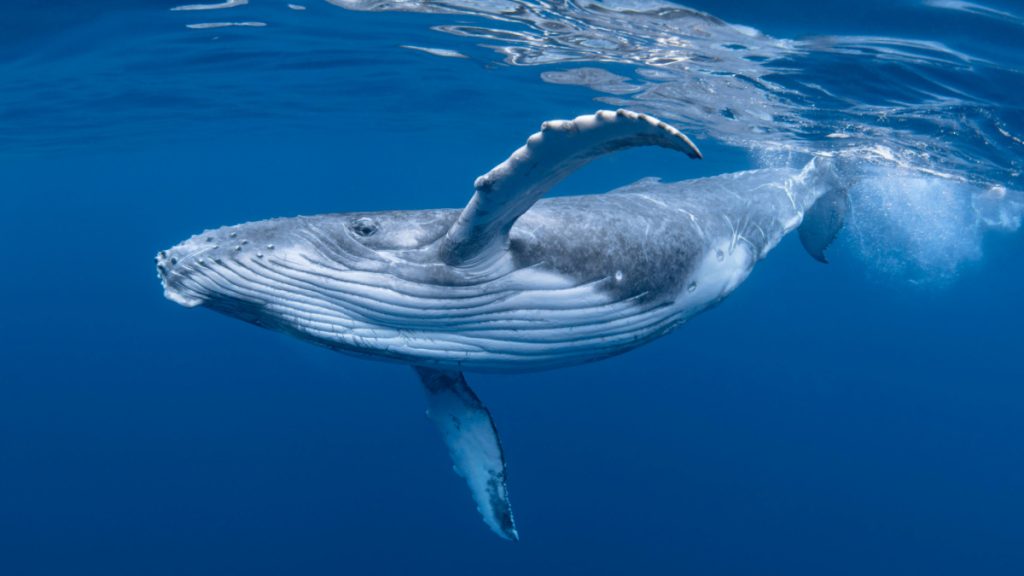
The noteworthy conversation in the original whale dialect may pave the way for forthcoming whale-human communication.
In a recent publication in Peer Magazine, scientists from the University of California Davis, Alaska Whale Foundation, and SETI collaborated to engage in communication with whales.
Conversing with a Humpback Whale
The team’s historic 20-minute discussion with Twain, a humpback whale, using its native language was a significant milestone. Twain approached the boat, circling it, and responded to the call each of the 36 times the scientists made it within twenty minutes.
Lead author Brenda McCowan suggested, “Twain’s consistent timing implies deliberate engagement.” She also noted that if scientists waited 10 seconds before re-establishing contact with Twain, the whale waited the same duration before responding. “We felt we had received a response,” emphasized Sharp to Business Insider, asserting that their work is authorized and not recommended for replication. “We hope you feel the same way.”
“We think this is the first time humans and humpback whales have communicated using the humpback ‘language’,” stated Dr. Brenda McCowan, a U.C. Davis veterinary medicine professor, in a press release. Researchers recorded humpback whale calls a day before the encounter; Twain was among the group, possibly reacting to her own cue. “Perhaps we were reciprocating her greeting,” speculated Sharpe.
Lawrence, a co-author, and the lead researcher at SETI, hypothesized that Twain’s actions could mirror intelligent alien attempts to reach out to humans. Dr. Laurance Doyle highlighted, “In the pursuit of extraterrestrial intelligence, the assumption is that extraterrestrial beings may seek contact, as evident in humpback whale behavior.”
Lawrence and SETI colleagues are developing intricate filters in collaboration with animal scientists to assist in detecting extraterrestrial intelligence. Doyle informed Business Insider, “If extraterrestrials are attempting to send us signals and communicate, we might overlook them if we’re unaware of what to look for.”
Scientists aim to use these filters to detect intelligent signals from space for the first contact with extraterrestrial life and for whale-human communication. “There are various forms of intelligence on this planet, and by studying them, we can gain a better understanding of what an alien intelligence might entail, as it may differ from ours,” said McCowan.
Significance and Future Initiatives
Doyle suggested that the study explores the possibility of sentient alien life initiating communication with humans. “Whale research suggests that if a species is intelligent, curiosity tends to accompany it, leading to a desire for contact,” stated Doyle.
Similar studies are intended for dolphins, cooperative carnivores, and other sentient animals, like meerkats and elephants.
Inside Telecom provides you with an extensive list of content covering all aspects of the tech industry. Keep an eye on our Tech sections to stay informed and up-to-date with our daily articles.